Liposuction, which is sometimes referred to as body contouring, is one of the most frequently performed cosmetic procedures in the world. During liposuction, we use state-of-the-art surgical equipment to suction away stubborn areas of fat, usually in the hips, buttocks, arms, abdomen, breast, and thighs. While liposuction is a fairly straightforward procedure, it is still considered surgery, and thus patients will need to take some downtime to heal after their treatment.
If you are considering liposuction, it is important to know what the recovery process looks like, and measures you can take to minimize your recovery time and heal effectively. During your initial consultation, we will go over more intensive post-operative instructions, and you can also ask any questions you might have about the surgery. In the meantime, this list of post-recovery tips can help you in your initial planning stages for liposuction.
Eat a Balanced Diet After Liposuction
Eating a healthy and balanced diet can help your body heal after any surgery, especially liposuction. It can also help you maintain your new figure. Patients should eat foods that are high in nutrients with moderate fat content and avoid simple carbohydrates. Below are some extra diet guidelines to follow:
Minimize your salt intake. Salt causes the body to retain water, which can lead to bloating and swelling. By eating foods that are low in sodium, patients can help reduce post-surgical swelling.
Avoid sports drinks. Gatorade and other sports drinks have high sodium content which as we mentioned earlier causes water retention.
Avoid sugary foods and drinks. Sugar can have a negative impact on the immune system, upset your body’s mineral balance, and negatively impact your blood sugar levels. During your recovery period, we recommend avoiding all junk food, especially food and drinks with high sugar content.
Eat a lot of protein. Protein encourages wound healing, muscle regeneration, and skin repair. Eating snacks and meals that are high in protein will help your body heal itself after liposuction.
Eat little meals throughout the day. Instead of eating three large meals a day, you can cut back on nausea and bloating by eating small meals several times throughout the day.
Wear Compression Garments
After surgery, our doctor will cover the surgical site in bandages and compression garments. Wearing bandages and compression garments after surgery will help minimize bleeding, encourage contouring from the surgery, and maintain pressure in the area.
Compression bandages and garments can be purchased at most pharmacies. Wearing your compression garment after surgery will also help improve circulation, promote healing, and reduce swelling. Most patients will need to wear their post-operative bandages or compression garments for 2 weeks after surgery. We will further advise you on this at your liposuction consultation.
Resting After Liposuction
For the first 24 hours after surgery, you should rest and avoid movement as much as possible. About a week after your surgery, you can start resuming your normal activities. However, you should listen to any pain and what your body is telling you for the first 6 weeks after surgery. This means that you should sleep if you feel tired, and eat and drink when hungry or thirsty.
Take Time Off From Work After Surgery
Patients will need to take at least a few days after surgery to rest from work or school and should ensure they base their schedule around their surgery. During your consultation, our physician will further discuss the amount of time for rest you will specifically need for your treatment.
The recovery time you need will depend on the area of surgery and the amount of fat removed. Patients with larger treatments areas will need more time to recover. Before going into surgery, you should prepare your bedroom and home to create a clean and comfortable healing environment. More cozy bedding and pillows will help you sleep better after surgery.
Moving Around After Liposuction
After the first 24 hours of surgery, patients can help increase their circulation and reduce swelling by slowly walking and moving around as tolerated. While patients should not raise their heart rate or undergo serious cardio workouts, it is recommended that patients start by gradually walking around their neighborhood at a slow pace without raising their heart rate. Again, if patients feel fatigued, dizzy, or nauseous, he or she should rest as needed.
Watch for Signs of Complications
While complications are rare, all surgeries are accompanied with some inherent risks. Patients should pay attention to their body for signs of complication or infections, including the following:
Excessive swelling, bruising, or redness
Severe pain
A headache, nausea, or vomiting
Fever
Yellow or green discharge near the incision site
Loss of feeling or movement
If you are experiencing any of the aforementioned symptoms after liposuction surgery, call our office immediately. All liposuction patients will need to follow-up with our surgeon to assess the surgical area and ensure proper healing.
After liposuction surgery, patients should expect some post-operative swelling, which can interfere with seeing immediate results. Fortunately, most swelling should subside within 4 weeks, at which time you will begin to see the transformative results of your procedure.
Want to learn more about the healing process for liposuction? Call Alan Matarasso, MD today at 212-249-7500.

